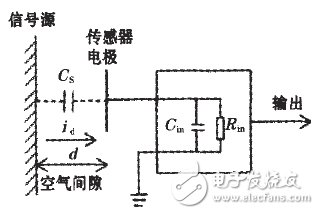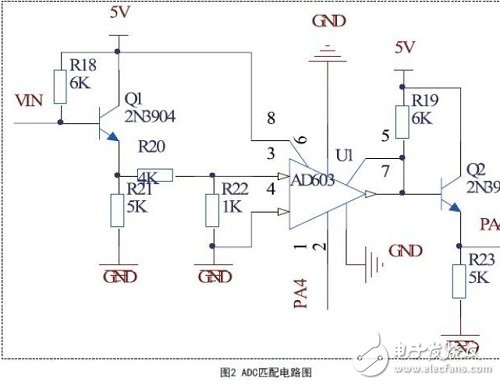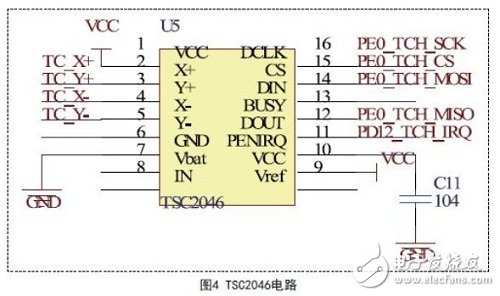LTE is a long-term evolution of the UMTS (Universal Mobile Telecommunications System) technology standard developed by the 3GPP organization. The LTE system introduces key transmission technologies such as OFDM (Orthogonal Frequency Division Multiplexing) and MIMO (Multiple Input Multiple Output), which significantly increases spectrum efficiency and data transmission rate, and supports multiple bandwidth allocations: 1.4MHz, 3MHz, 5MHz, 10MHz, 15MHz and 20MHz, etc., and support the global mainstream 2G/3G frequency band and some new frequency bands, so the spectrum allocation is more flexible, system capacity and coverage are also significantly improved. The network architecture of the LTE system is flatter and simplistic, which reduces the complexity of network nodes and systems, thereby reducing system delay and reducing network deployment and maintenance costs. The LTE system supports interoperability with other 3GPP systems. To this end, this article introduces some of the LTE test circuit design. TOP1 realizes voltage non-contact stability measurement circuit Non-contact voltage measurement principle The principle of non-contact voltage measurement is similar to that of a magnetometer that measures magnetic fields. It does not require a direct electrical connection. By capacitive coupling, the displacement current is used to measure the voltage on the surface of the object or free space. The sensor electrode is placed in the electric field, and a coupling capacitor is formed between the sensing electrode and the signal source, and a voltage dividing circuit is formed between the measuring system and the ground through the coupling capacitor signal source, as shown in FIG. Figure 1 Schematic diagram of non-contact voltage measurement When the coupling impedance is negligible compared to the system input impedance, the system is equivalent to a voltmeter with ideal characteristics to effectively measure the voltage signal. Therefore, in order to improve the sensitivity of the system, in the system design process, feedback technology should be used to improve the input resistance of the front-end sensor of the system and reduce the input capacitance. By measuring the magnitude of the two points in the air, the relationship between the voltage and the electric field can be derived. Demystifying STM32 multi-channel voltage measurement circuit ADC control circuit module In order to expand the measurement range and measurement accuracy, this design adds a matching circuit to the STM32's ADC. In the ADC control circuit, the input signal passes through the emitter voltage follower circuit and then passes through the voltage divider circuit to make the input signal meet the input requirements of AD603. It is then passed through the emitter voltage follower circuit and input to the ADC input. The control input of the AD603 uses the STM32 DAC to meet the gain requirements. The matching circuit is centered on AD603. The AD603 is a single-channel, low-noise, gain-variable linearly continuously adjustable gain amplifier. When the bandwidth is 90MHz, the gain varies from -10dB to +30dB. When the bandwidth is 9M, the range is 10~50dB. Short-circuit VOUT and FDBK, that is, broadband mode (90MHz wideband), and the gain of AD603 is set to -11.07dB. ~+31.07dB.AD603 is connected to pins 5 and 7. The adjustable range of single-chip AD603 is -10dB~30dB. The gain of AD603 is linear with the control voltage. The gain control terminal input voltage range is ±500mv, and the gain adjustment range is 40dB, when stepping 5dB, the control terminal voltage needs to increase: The circuit diagram of the ADC matching circuit is shown in Figure 2. SD card driver circuit The SD card used in this design is MicroSD, also known as TF card. MicroSD card is a very small flash memory card, mainly used in mobile phones, but due to its small size and increasing storage capacity, it has been used in GPS devices, portable music players, digital cameras and some flashes. In the memory disk. Like the SD card, the MicroSD card has two operating time buses, SPI and SDIO. The SPI bus is simpler than the SDIO bus interface, but at a slower speed. We use the SDIO mode. The MicroSD card has 4 data lines in SDIO mode. In fact, MicroSD has 1 line mode and 4 line mode in SDIO mode, that is, 1 or 4 data lines respectively. Of course, the 4-wire mode is faster than the 1-wire mode, but the operation is more complicated. The 4-wire mode of SDIO is used in this design. The hardware connection diagram of the MicroSD card is shown in Figure 3. Touch screen circuit This design uses the touch screen to set the measured channel and display settings in addition to the button settings. The touch screen is controlled by the chip TSC2046, and its hardware connection diagram is shown in FIG. 4. In FIG. 4, the TSC 2046 can acquire the point coordinates of the touch screen to determine the position of the touch and perform human-computer interaction. The STM32 MCU communicates with the TSC2046 via the SPI bus to obtain touch information. This design uses the touch screen to set the number of measurement channels and set the measurement speed. The STM32 is superior in terms of speed and power consumption, and the STM32 is less expensive and has an advantage in cost. Suitable for controlling the design of electronic devices. A 12-bit ADC is used to meet certain measurement accuracy, and for higher measurement requirements, a higher accuracy ADC is required. However, the use of high-precision ADCs and DSP chips will greatly increase development costs. This design completes the functions of multi-channel voltage measurement, but it also needs to check its stability and reliability during use to make the design more perfect. What is Car Ethernet Vehicle Router,Vehicle 4G Router,Vehicle 4G Wireless Router,Vehicle Wifi Router Shenzhen MovingComm Technology Co., Ltd. , https://www.mcrouters.com



Global Electronic Measurement Technology and Market Leader - Keysight (formerly Agilent Electronic Measurement Division)
Car Ethernet is a new local area network technology that uses Ethernet to connect the electronic unit in the car. Unlike traditional Ethernet, which uses 4 unshielded twisted pair cables, car Ethernet can achieve a transmission rate of 100Mbit/s or even 1Gbit/s on a single pair of unshielded twisted pair cables. At the same time, it also meets the requirements of the automotive industry for high reliability, low electromagnetic radiation, low power consumption, bandwidth allocation, low latency and synchronous real-time. The physical layer of on-board Ethernet uses BroadRReach technology, and BroadR-Reach's physical layer (PHY) technology has been standardized by the One-pair Ethernet Alliance (OPEN). Therefore, it is sometimes called Broad RReach (BRR) or OABR (Open Alliance BroadR-Reach). The MAC layer of vehicle Ethernet adopts the IEEE 802.3 interface standard and seamlessly supports widely used high-level network protocols (such as TCP/IP) without any adaptation.
On-board Ethernet protocol architecture
Vehicle-borne Ethernet and its supported upper-layer protocol architecture are shown in Figure 1. Vehicle-borne Ethernet mainly involves OSI layer 1 and Layer 2 technologies, while vehicle-borne Ethernet also supports AVB, TCP/IP, DOIP, SOME/IP and other protocols or application forms.
On-board Ethernet framework
Among them, AVB is an extension of traditional Ethernet functions, which enhances the real-time performance of traditional Ethernet audio and video transmission by adding precise clock synchronization, bandwidth reservation and other protocols, and is a network audio and video real-time transmission technology with great development potential. SOME/IP (Scalable Service-Oriented MiddlewarE on IP) specifies the video communication interface requirements for vehicle camera applications, which can be applied to the field of vehicle cameras, and realizes the mode control of driver assistance cameras through apis.
As an extension of AVB protocol, Time-Sensitive Networking (TSN) introduces related technologies of time-triggered Ethernet, which can efficiently realize the transmission of automotive control information. In addition, the on-board Ethernet of the 1Gbit communication standard also supports Power Over Ethernet (POE) function and Energy-Efficient Ethernet (EEE) function. The POE function provides power for connected terminal devices while transmitting data through twisted pair cables, eliminating the need to connect external power cables to terminals and reducing the complexity of power supply.
On-board Ethernet standardization
In terms of in-vehicle Ethernet standardization, the IEEE802.3 and IEEE802.1 working groups, AUTOSAR, the OPEN Alliance and the AVnu Alliance have played a major role in promoting it.
The IEEE802.3 local area network standard represents the mainstream Ethernet standard in the industry, and the on-board Ethernet technology is developed on the basis of IEEE802.3, so the IEEE is currently the most important international standardization body for on-board Ethernet. In order to meet the requirements of the car, it involves the development of a number of new specifications and the revision of the original specifications within the two working groups of IEEE802 and 802.1, including PHY specifications, AVB specifications, and single-wire to data line power supply. In addition, AVB related to AV transmission, timing synchronization and other specifications also need to be standardized by other technical committees of IEEE, such as IEEE1722 and IEEE1588.
OPEN Alliance
The OPEN Industry Alliance was launched in November 2011 by Broadcom, NXP, and BMW to promote the application of Ethernet-based technology standards to in-car connectivity. The main standardization goal is to develop a 100Mbit/s BroadR-R physical layer standard and develop OPEN interoperability requirements.
AUTOSAR
AUTOSAR is a consortium of automotive manufacturers, suppliers, and tool developers that aims to develop an open, standardized automotive software architecture, and the AUTOSAR specification already includes the automotive TCP/UDP/IP protocol stack.
AVnu
The AVnu Alliance was formed by Broadcom in collaboration with Cisco, Harman and Intel to promote the IEEE 802.1 AVB standard and the Time Synchronization Network (TSN) standard, establish a certification system, and address important technical and performance issues such as precise timing, real-time synchronization, bandwidth reservation, and traffic shaping.